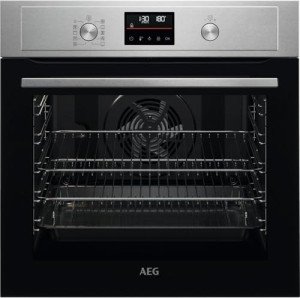The Efficiency of Self-Cleaning Ovens: A Comprehensive Overview
When it pertains to preserving kitchen area home appliances, couple of innovations have actually significantly changed the cleaning process as much as self-cleaning ovens. Their capability to assist in a practically hands-free cleaning experience has made them a popular option among modern-day house owners. This short article looks into the efficiency of self-cleaning ovens, checking out how they work, their benefits, disadvantages, and tips for use.
Understanding Self-Cleaning Ovens
Self-cleaning ovens utilize high temperatures to burn off food residues, grease, and gunk, turning them into ash that can be quickly wiped away. Usually, there are three main types of self-cleaning methods employed in ovens:
- Pyrolytic Cleaning: This is the most typical self-cleaning approach where the temperature rises to around 900 ° F(482 ° C). The high heat incinerates food particles, leaving only a small amount of ash.
- Steam Cleaning: This technique utilizes steam to soften food residues, making them much easier to clean away. The process normally takes less time and runs at lower temperatures compared to pyrolytic cleaning.
- Catalytic Cleaning: This technology involves special panels coated with a porous substance that absorbs spills and splatters during cooking. While Self Cleaning Oven Technology -cleaning approach, catalytic panels can be cleaned down easily after cooking.
Efficiency Analysis
The efficiency of self-cleaning ovens can be examined based on several factors, consisting of energy intake, time cost savings, cleaning effectiveness, and safety.
| Element | Pyrolytic Cleaning | Steam Cleaning | Catalytic Cleaning |
|---|---|---|---|
| Temperature | Up to 900 ° F( | 482 ° C)Approximately 212 ° F( | 100 ° C)Varies (heat during cooking) |
| Cleaning Time | 2 to 4 hours | Thirty minutes to 1 hour | Continuous throughout cooking |
| Energy Consumption | High (due to high temperature level) | Moderate | Low (during routine use) |
| Effectiveness | Extremely effective | Reasonably reliable | Effective for light spills |
| Safety | Requires cool-down time | Usually safe | Safe when panels are functioning |
Advantages of Self-Cleaning Ovens
- Convenience: The hands-free aspect of self-cleaning ovens is possibly their greatest appeal. It conserves effort and time compared to traditional cleaning methods.
- Deep Cleaning: The pyrolytic method, in specific, is exceptional for getting rid of persistent baked-on residues that would otherwise require hours of scrubbing.
- Reduction in Cleaning Products: Homeowners frequently find they require fewer harsh chemical cleaners, contributing to a healthier kitchen area environment.
- Increased Lifespan: A clean oven can potentially last longer given that the heats help in reducing the buildup of harmful residues.
Downsides of Self-Cleaning Ovens
- High Energy Use: The pyrolytic cleaning process can use a substantial amount of energy, which might cause increased energy costs, especially if done frequently.
- Heat Generation: During the self-cleaning process, the oven can end up being exceptionally hot, causing potential safety concerns if there are children or animals in the home.
- Emissions: Some issues have actually been raised about the emissions triggered by burning residues, which might negatively affect air quality in smaller kitchens.
- Endure Components: Regular usage of high-temperature cleaning cycles might cause use on certain oven components over time.
Tips for Optimal Use of Self-Cleaning Ovens
To make the most of the efficiency and effectiveness of a self-cleaning oven, property owners need to think about the following tips:
- Refer to the Manual: Always seek advice from the user handbook for specific cleaning instructions and guidance tailored to the design you own.
- Clean Regularly: Although self-cleaning ovens are designed to make life much easier, routine usage of the self-cleaning function can avoid buildup and decrease the number of cycles needed.
- Get rid of Accessories: Always eliminate racks, thermometers, and any other accessories before initiating a self-cleaning cycle to avoid damage.
- Guarantee Good Ventilation: Because high temperature levels and potential emissions are involved, ensure adequate kitchen area ventilation during the self-cleaning process.
- Keep a Watchful Eye: While ovens are normally safe, it's an excellent practice to keep track of the self-cleaning process, particularly during the very first few uses.
FAQs About Self-Cleaning Ovens
1. How typically should I utilize the self-cleaning function on my oven?
It is normally advised to use the self-cleaning function every 3 to 6 months, depending upon use. More regular use may be required for those who bake or roast regularly.
2. Are self-cleaning ovens safe for family pets and kids?
While self-cleaning ovens are safe, the process generates considerable heat. It's necessary to keep children and family pets away from the kitchen area during the self-cleaning cycle to prevent accidents.
3. Can Suggested Internet site use regular oven cleaners in addition to self-cleaning features?
No, using routine oven cleaners within a self-cleaning oven is prevented as it can harm the oven's interior and result in harmful fumes.
4. Is steam cleaning as effective as pyrolytic cleaning?
Steam cleaning is normally less efficient for hard, burnt-on residues compared to pyrolytic cleaning however is a quicker and safer alternative for light spills.
Self-cleaning ovens represent a considerable development in cooking technology, providing benefit and efficient cleaning services for modern-day kitchens. With careful use and an understanding of both their strengths and restrictions, house owners can take pleasure in the benefits of these appliances while maintaining a tidy and efficient cooking environment. As technology continues to develop, the future may bring even more innovations in the world of kitchen cleaning efficiency.

